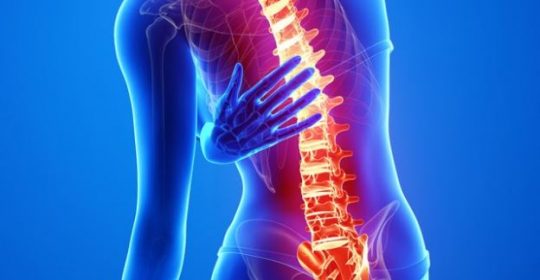
An Overview of Spinal Cord Disorders
Spinal cord disorders are known to cause permanent and severe problems in life, such as paralysis and even impaired bladder and bowel control. However, these can be minimized or even avoided if the spinal cord disorder is diagnosed and treated early. At GNC Dubai, our licensed neurologists are trained and equipped to diagnose spinal cord injuries and can identify where along the spine the injury has occurred.
The spinal cord consists of a bundle of nerves that run down the middle of the back, carrying signals back and forth between the body and the brain. It is protected by the vertebrae, so if you have an accident that damages other parts of the spine or the vertebrae, this may injure the spinal cord as well.
What causes spinal cord disorders?
Spinal cord disorders or injuries can take place either inside or outside the spinal cord, and therefore have different causes.
Disorders inside the spinal cord include tumors, abscesses, fluid-filled cavities, vitamin B12 deficiency, HIV, hemorrhages, syphilis and multiple sclerosis. In some cases, radiation therapy can also negatively affect the spinal cord.
Disorders outside the spinal cord can be caused by spinal injuries, blockage of blood supply, compression of the spinal cord, hematoma, tumors or even a ruptured or herniated disk.
Symptoms of spinal cord disorders
The ability to control the limbs after a spinal cord injury will usually depend on two factors. The place of the injury and the severity of the injury.
Due to the way the spinal cord is organized, damage or injuries will often produce specific patterns of symptoms depending on where exactly the damage has occurred.
Common symptoms include:
- Loss of sensation, including the ability to feel light touches, temperature or pain
- Loss of bowel/bladder control
- Changes in reflexes or spasms
- Muscle weakness
- Difficulty breathing
- Back pain
- Erectile dysfunction
If you alert your doctor to which daily functions you do not have control over anymore, they will be able to identify which part of the spinal cord specifically is damaged – such as the front, back, center, side or the entire spinal cord itself.
Diagnosis
Doctors can typically recognize a spinal cord disorder based on the characteristic patterns of the identified symptoms. Doctors will conduct a physical examination that will provide insight to the diagnosis. If the spinal cord is damaged, the examination will help determine where the damage is. Imaging tests are also done to confirm the diagnosis and determine the possible cause.
Nerve Conduction Velocity (NCV) is the most specific test to show any type of nerve damage. If a nerve is damages it usually transmits the signal slower than an undamaged nerve. This can be measured by sending electrical impulses thru the nerves. It can even show damaged nerves when the MRI seems normal.
Magnetic resonance imaging (MRI) is known to be the most accurate imaging test when it comes to diagnosing spinal cord disorders. The MRI will show the spinal cord, along with abnormalities in the soft tissues around the cord (hematomas, tumors, abscesses) and abnormalities in the bone (tumors, fractures, cervical spondylosis).
If an MRI isn’t available, myelography with computed tomography is often used. This is done after a radiopaque contrast agent is injected into the space surrounding the spinal cord.
X-rays may also be done to check for problems with the spine, such as fractures or tumors.
Treatment
The treatment depends very much on the cause. Since there is a big variety of courses, there are many different treatment options.
Generally speaking a conservative treatment is always preferred and everything should be done to avoid surgery. In most common cases of disk disorders, this is possible with certain medications and specialized physiotherapy.
Other causes such as tumors, bleedings etc require surgical intervention.
Nerves are healing very slowly, therefore some patients even have a positove outcome after months or years.

